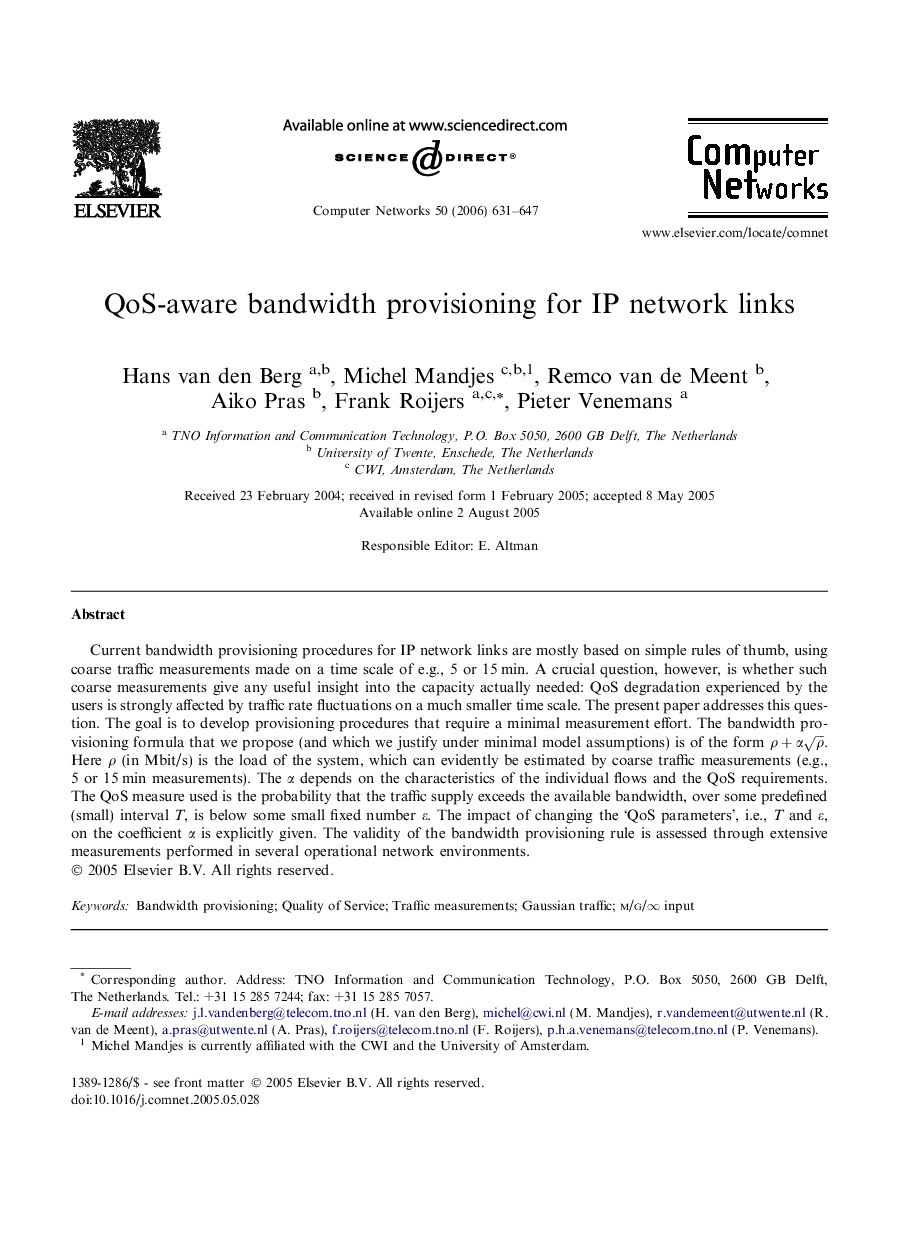| Article ID | Journal | Published Year | Pages | File Type |
|---|---|---|---|---|
| 452761 | Computer Networks | 2006 | 17 Pages |
Current bandwidth provisioning procedures for IP network links are mostly based on simple rules of thumb, using coarse traffic measurements made on a time scale of e.g., 5 or 15 min. A crucial question, however, is whether such coarse measurements give any useful insight into the capacity actually needed: QoS degradation experienced by the users is strongly affected by traffic rate fluctuations on a much smaller time scale. The present paper addresses this question. The goal is to develop provisioning procedures that require a minimal measurement effort. The bandwidth provisioning formula that we propose (and which we justify under minimal model assumptions) is of the form ρ+αρ. Here ρ (in Mbit/s) is the load of the system, which can evidently be estimated by coarse traffic measurements (e.g., 5 or 15 min measurements). The α depends on the characteristics of the individual flows and the QoS requirements. The QoS measure used is the probability that the traffic supply exceeds the available bandwidth, over some predefined (small) interval T, is below some small fixed number ε. The impact of changing the ‘QoS parameters’, i.e., T and ε, on the coefficient α is explicitly given. The validity of the bandwidth provisioning rule is assessed through extensive measurements performed in several operational network environments.
